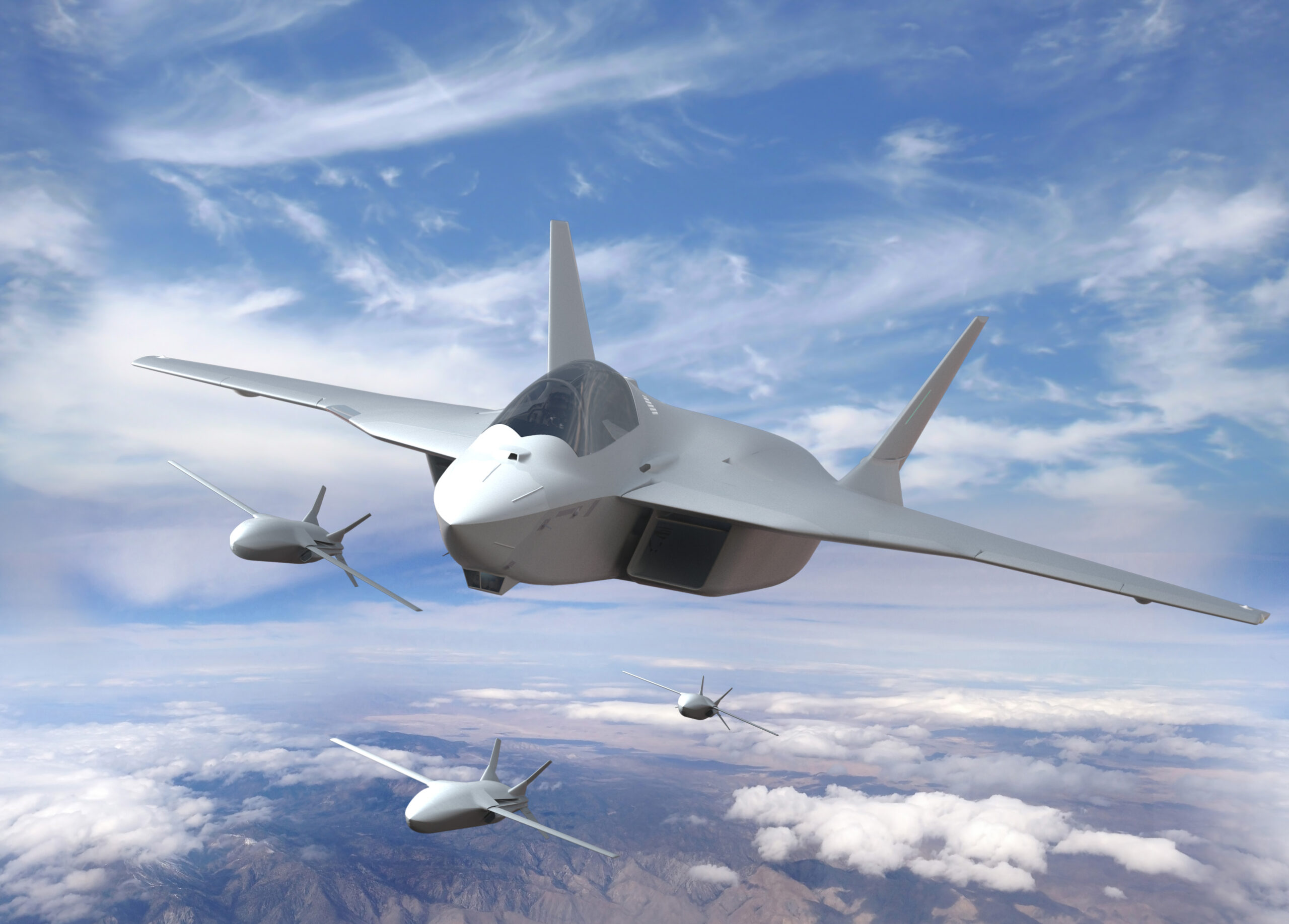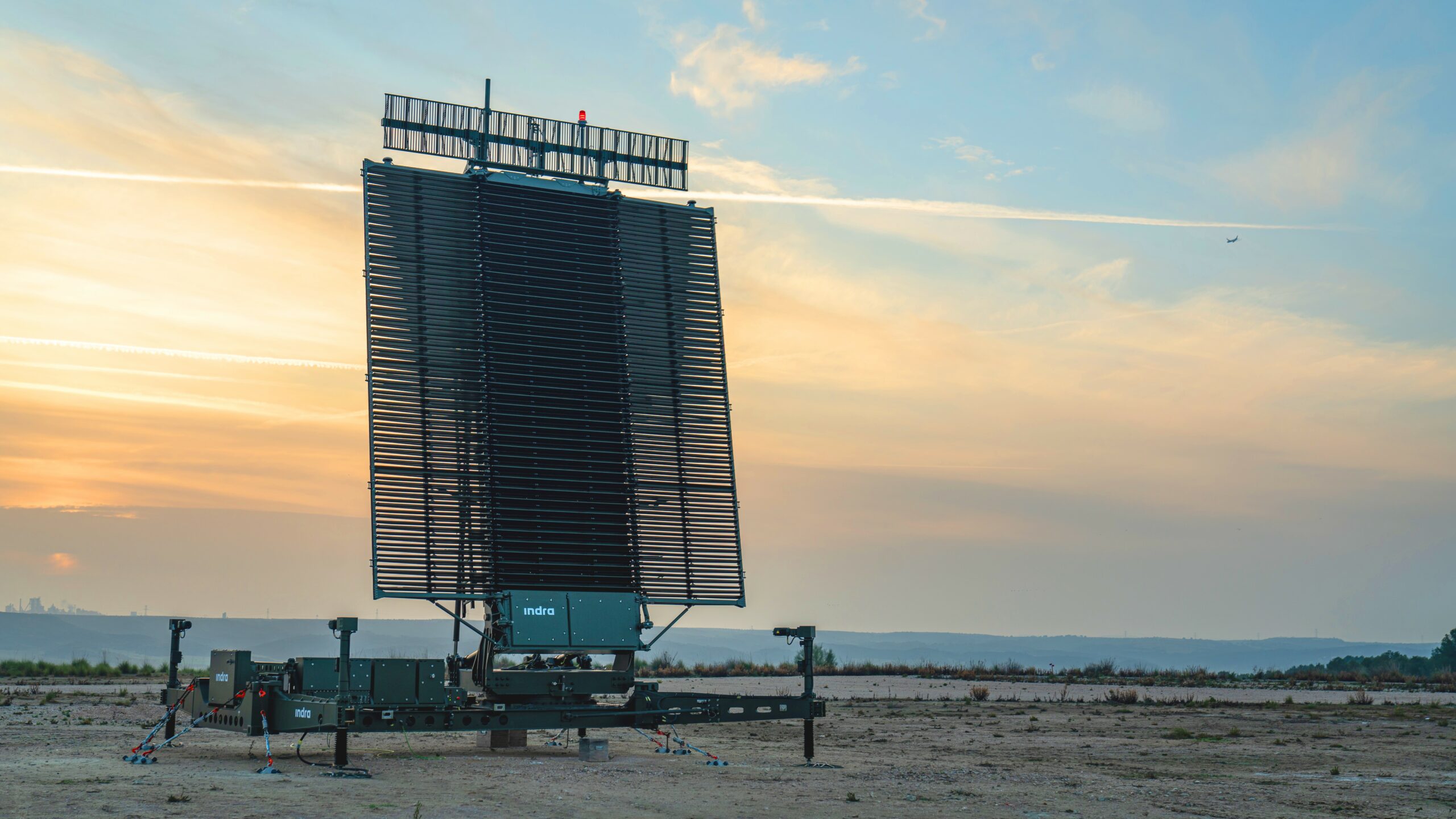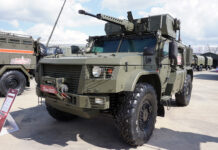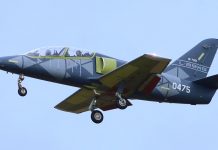Spain’s defence industry, especially its aerospace sub-sector, is a significant player in European defence. The current security situation in Europe and planned increases in defence spending could provide an additional boost to its further development.
Spain is one of those European countries for which a defence industry is an essential element of its industrial base. The Spanish Government considers it a strategic asset that enhances national sovereignty and Spain’s position both in Europe and globally.
Additionally, it is seen as a valuable contributor to the Spanish economy, which, despite its problems, is one of the leading economies in the European Union. Official data shows that it generates around 23,500 direct jobs, while some sources estimate that it creates up to 57,000 indirect and related jobs through additional spending. In total, 76.3% of Spanish defence industry companies are classified as SMEs. The Ministry of Defence has 509 companies listed on the Register of Companies (El Registro de Empresas) of the General Directorate for Armament and Material (DGAM, Direccion General de Armamento Y Material), while in 2020, there were 543 registered companies (380 of which declared sales in the defence sector).
The Madrid-based Real Instituto Elcano has observed that Spain was one of the most severely affected Eurozone countries by COVID-19. Obviously, this has also impacted its defence industry, causing disruptions to supply chains, reduced demand, and delayed procurement processes. However, despite the pandemic, the Spanish defence industry has recorded one of the highest rates of growth in recent years. According to an official statement by a DGAM Director, the strong position of the Spanish defence industry is the result of three factors. Firstly, it offers dual-use products and services. Secondly, it has a strong technological and innovative component, which favours the creation of highly qualified employment and increased competitiveness. And thirdly, it has a positive impact on a high number of sectors in the auxiliary industry.

Credit: GDELS
General characteristics
According to official data, 30 major entities comprise 90% of the entire defence market. Of these, Airbus Defence & Space (AD&S) and Airbus Military account for 66% of all international business conducted by the defence industry. When other industry leaders, such as Navantia, Indra Systems, GDELS-Santa Bárbara Sistemas, and ITP Aero, are included, the percentage increases to 86.9%.
Due to relatively low domestic demand, with Spain spending only 1% of its GDP on defence, the local industry relies heavily on foreign sales. In fact, 84% of all sales are international, totalling EUR 5.29 Bn in 2020, a decrease of 5.1% compared to 2019. Out of the 380 firms registered in the Register of Companies, 126 have reported international defence sales, which is five more than in 2019. This means that 33.2% of defence companies have found international customers for their products and services.
The Spanish defence industry is capable of designing, developing, and integrating large systems in the naval, land, and aerospace sub-sectors. Spain is also an important member of numerous international networks, including the EU’s Permanent Structured Cooperation (PESCO), which includes Spanish participation in the Future Medium-Size Tactical Cargo (FMTC) aircraft project and the European Patrol Corvette (EPC) programme. Additionally, Spain, as one of the 22 members of the European Space Agency (ESA), plays a significant role in the EU’s space projects such as COPERNICUS (Earth observation) and GALILEO (Global Navigation Satellite System). Spain’s industry has contributed to the development of the SENTINEL-1 and SENTINEL-2 satellites for COPERNICUS and has hosted ground stations for GALILEO. Furthermore, Spanish companies are involved in the HORIZON EUROPE funding programme for research and innovation.
Spain’s strategy is based on providing ready-made solutions, as well as playing an important role in supply chains of international companies such as GDELS, Cessna, Bell, Gulfstream, Airbus Helicopters, and Bombardier. Over the years, Spain has gained a reputation as a country with broad competencies – for example, in a number of activities related to the aerospace industry – while at the same time attempting to become a leader in more specialised sectors, such as modern aviation materials. This includes both transport and specialised aircraft (including air refuelling), turbines, engines, aircraft structures, composites, and machinery. Spanish EADS-CASA centres in Madrid, Toledo, and Seville have made strides in the field of carbon fibre-reinforced plastics, which is crucial in building next-generation lighter, more economical structures (it is worth noting that this material has been used in the production of A400M wings, as well as the A380 and A350 aircraft).

Credit: Airbus
National champion
The aerospace sub-sector is the most important component in Spain’s defence industry. It accounts for the largest number of international defence sales, totalling 64% of all defence exports, ahead of naval (13.5%), land (8.1%), and other sub-sectors. Moreover, 73.1% of its production is directed towards the military market with 43.8% of all employees working directly in the defence industry in this sub-sector. As much as 92% of the production of the Spanish aerospace sub-sector is targeted for export, which is due to the strong position of AD&S and Airbus Military; respectively, this represents 55.3% and 35.7% of all international defence sales in the aerospace sub-sector.
A distinguishing feature of the Spanish aerospace industry is its very high participation in multilateral projects and large investments in research and development (R&D). Spain is involved in several leading European projects, including the A400M, Eurofighter Typhoon, and Eurocopter Tiger. Additionally, Spain continues to participate in various international networks, including transport aircraft programmes such as the C-295 and CN-235, as well as the C-212 until 2013. Apart from the final assembly of the A400M, the facilities in Seville are also responsible for the assembly of the A350 XBW.
The facilities in Getafe are involved in a conversion of the A330 MRTT (Multi Role Tanker Transport) aircraft. The Spanish are also to some extent involved in MBDA activities, a joint venture established in 2001 by merging the missile divisions of EADS (now Airbus), Finmeccanica (now Leonardo), and BAE Systems. The company is responsible for several multinational projects, including the Meteor missile, which has recently been integrated with Spanish Eurofighters. Getafe also produces tail cones for the A350 and A380, while Airbus facilities in Illescas produce composites and wing covers for the A350. A third place for production, integration, and testing of A350, A320, and A380 aircraft is Puerto Real.
ITP Aero – a joint venture established in 1989 between SENER and Rolls-Royce – has become one of the world’s largest designers and producers of aircraft engines over the past few decades. The company, which built its knowledge from scratch, is now involved in several key projects, including engines for Eurofighter Typhoon aircraft (EJ200), A400M (TP400), and Eurocopter Tiger helicopters (MTR390-E). Today, ITP Aero operates in various locations globally, providing a wide range of aircraft engine-related products and services to customers in the commercial and defence aviation industries. The presence of space centres on Spanish soil, including the EU Satellite Centre (EU SatCen) based in Torrejon de Ardoz, is also a benefit for the Spanish aerospace sub-sector.
Several technology parks have also been established, including Aéropolis in Seville, which has been operating since 2003 and is the only centre of its kind in Europe entirely focused on the aerospace sector. To increase their market position, industrial clusters such as Hélice (in Andalusia since 2004) and specialised R&D and testing centres have been established; an example of this is the Technologies Centre (Centro Tecnológico de Álava). This aerospace test laboratory is a good illustration not only of how innovative high-value potential can be built for the aerospace industry (not only military), but also that it is possible to create competences from scratch. The Technologies Centre is located in the Basque region, where its traditional steel and shipbuilding industry suffered as a result of the crisis in the 1970s and 1980s. With the help of local authorities, the aviation industry was created from scratch, and now employs between 6,000–8,000 people in over 40 companies.
One flagship project that could provide Spanish industry with a significant technological boost is NGWS/FCAS (Next Generation Weapon System/Future Combat Air System), which aims to develop a new, multi-purpose jet aircraft as a successor to the Eurofighter Typhoon and Dassault Rafale following an agreement signed between France, Germany, and Spain in 2019. The coordinator of the Spanish industry and the leader in four of the eight priority areas is Indra Sistemas, which will collaborate with Airbus Germany and Dassault Aviation.

Credit: Airbus
The fact that Spain enjoys an equal voice (its contribution to this initiative is 33%) and co-decides on the possible addition of new shareholders reflects its position and in this regard, ITP Aero is responsible for the engine in the project. In December 2022, GMV, SENER Aeroespacial, and Tecnobit-Grupo Oesía reached agreement to jointly lead Spain’s participation in the Remote Carrier Technology Pillar (Pilar Tecnológico de Operadores Remotos). They are expected to design and evaluate new concepts of a set of unmanned vehicles, some with ISTAR observation capability.
Other initiatives
The aerospace sub-sector is not the only thriving element within Spain’s defence industry. Navantia is a leading Spanish company in shipbuilding, with a market share of 79.4%. The naval industry contributes 13.5% to the total sales of the defence industry, with 57.9% of all sales being for the military market. In 2019, Navantia had more than 3,800 employees and created over 8,000 direct jobs through auxiliary industries, as well as over 25,000 indirect and related jobs.
Navantia, which is owned by SEPI (Sociedad Estatal de Participaciones Industriales), is currently involved in several important programmes. One of these is the S-80 diesel-electric AIP-equipped submarine. Navantia’s shipyard in Cartagena has a contract to deliver four vessels of this class to the Spanish Navy (La Armada), signed in 2004. The first, the S-81, Isaac Peral, was launched in 2021 and began sea trials in mid-2022. The S-81 is expected to be handed over by mid-2023, while the other ships are scheduled for delivery by early 2026.
The company, which recently lost out on a Polish tender for new multirole frigates to Babcock, has another important programme underway. Navantia was awarded a contract by the Spanish Ministry of Defence to design and build five F-110 frigates for the Spanish Navy. The F-110 frigate is a new type of multi-mission warship that will replace the Navy’s ageing Santa Maria class frigates. Navantia is also responsible for designing and integrating the ship’s systems, including its combat system, communications, propulsion, and sensors.
The company is also responsible for building those ships at its shipyards in Ferrol and San Fernando. An interesting aspect of this project is that the F-110 will have a “digital twin” that simulates the ship’s performance under different operating conditions. This can be used to optimise the ship’s design and performance, as well as to identify and address potential issues before they occur.
The Spanish defence industry is also active in the land domain, ranking third among sub-sectors. GDELS-Santa Bárbara Sistemas holds a leading position (44% of total defence sales), followed by Indra (14.3%), URO Vehículos Especiales (12%), and Iveco España (7.6%). This sub-sector generates 8.1% of all defence sales and employs 9.2% of the work staff directly employed in the defence sector. Only 22.2% of their products are for the military market.

Credit: GDELS
An important project was launched in December 2021 when GDELS-SBS began production of the VCR Dragon, an 8×8 wheeled armoured vehicle. Spain has ordered 348 vehicles to be produced in Trubia (Asturias) at a cost of EUR 2.08 Bn. Ultimately, Spain could receive up to 1,000 Dragons in three batches, replacing two in-service wheeled vehicles – the Pegaso VEC-M1 and Pegaso BMR-M1. Several other companies are involved in the project, including Indra Sistemas, Sapa Placencia, and PAP Tecnos. Escribano Mechanical & Engineering will deliver locally designed and manufactured Guardian 30 turrets (which can be integrated with either a 30/40 mm Mk 44 Bushmaster II standard/stretch automatic cannon or the Russian 30 mm cannon 2A42 30 and a coaxial 7.62 mm machine gun). The participation of the Spanish defence industry is expected to be at least 70%.

Credit: GDELS
Future
The future condition of the Spanish defence industry may be determined by three significant projects, which are crucial from Madrid’s point of view. The most prestigious and important, but also the most challenging, is the FCAS sixth-generation fighter aircraft. Furthermore, future F-110 multirole frigates, due to their technological advancement, could also provide Spain with a significant boost. The third flagship project – the Dragon 8×8 – is less promising, but nevertheless important.

Credit: Airbus
At the same time, local press has that Madrid wants to strengthen the position of Indra, which is expected to become more influential in Europe. Additionally, the future of the Spanish defence industry may be influenced by the fact that Spain will hold the next presidency of the Council of the European Union from July to December 2023. Daniel Fiott, Head of the Defence and Statecraft Programme at the Centre for Security, Diplomacy and Strategy (CSDS) of the Brussels School of Governance (BSoG-VUB), believes that this gives Spain “an opportunity to help develop the Union’s space and defence initiatives.” Madrid will be responsible for the initial implementation of the EU’s first-ever strategy for space, security, and defence as space has clearly been identified as a strategic domain.

Credit: Indra
Another important factor is an expected increase in defence spending. Prime Minister Pedro Sanchez announced that Madrid would finally meet the NATO requirement to spend at least 2% of national GDP on defence by 2029. This means that Spain is expected to spend roughly EUR 24.1 Bn and it can be predicted that a significant portion of these funds, specifically for technical modernisation and R&D, will be directed towards the domestic defence industry.
Robert Czulda








